
A Walk around the Old Town (approximately 1½ hours)
Welcome to the Poole Cockle Trail tracing the town's rich historical heritage. This trail was opened in 1998 to celebrate the 750th anniversary of Poole's first charter.
Follow the numbered cockle signs set into the ground, which link with the numbers in the text. The trail was updated in Summer 2016.
Start Point We start beside the blue shelter and on the site of the old Fish Shambles (1), a symbol of Poole's past fish markets. The Lord Nelson (3), built in 1764, was formerly known as The Blue Boar, but was renamed in 1810 by the new landlord in honour of Lord Nelson who had been killed in battle some 5 years earlier. During the 1920's the pub was a favourite haunt of the artist Augustus John, when he lived and painted in Poole.
Next door is the Jolly Sailor (4). A former landlord of the pub, Harry Davis was famous for the number of times he dived off the quay to save people. The Coffee Club House (6) served for many years as a Seaman's mission with a chapel on the first floor. The next warehouse is shown on a print of the Quay dated around 1857. The building was converted in 1997 to The Quay Pub.
Welcome to Poole Quay Being situated on Europe's largest harbour, Poole has always looked to the sea for its prosperity. This has shaped its character as a town of merchants, mariners and foreign influences.
Over the centuries Poole Quay has recalimed much land from the sea. The medieval shoreline was level with the other end of the many alleys that run back from the quay. In their heyday these alleys would have been pungent with the smells of salt fish, seal oil, tar, wine, spirits and spices, stored in the warehouses. Under many of the buildings are wide storm drains which some say were used by smugglers.
The views of the harbour haven't greatly changed. Looking across the water you can see the National Trust's Brownsea Island, used by Baden Powell for the very first Boy Scout camp, and still home to the rare Red Squirrel. Henning's Wharf is a former Victorian warehouse. Previously a hoist on the front of the building was used to raise goods to various floors.
Probably the oldest building on the 'New Quay' is the Poole Arms link will open in new window (8), parts of which date back to the early 17th century. The front wall is covered with tiles made by Carter's of Poole, the forerunners of Poole Pottery link will open in new window .
You will see the Poole Coat of Arms, which is a shield with a swimming dolphin and three scallop shells. The shells are the symbol of St. James, to whom the parish church is dedicated. Underneath is the town motto: 'Ad morem villae de Poole – According to the custom of the town of Poole' The next building, Grace House, was once the Britannia Inn. The Portsmouth Hoy (9) was named after the Portsmouth coasters which used to moor opposite this section of the quay.
Walking further along there are new developments of contemporary bars + restaurants Purbeck Pottery showroom (11) is housed in one of the old warehouses. The Working Quay Boat Yards Across the water are the busy boatyards of the Hamworthy area of Poole.
Boats have been built in Poole for centuries. In fact an ancient logboat dated to 295BC was dredged out of the harbour in the 1960's. In medieval times men sailed from the quay in ships like the one depicted on this plaque, based on a 14th century Poole seal.
Boats are still made in Poole, but these days they are for pleasure rather than commercial cargo. Sunseeker's million pound power boats have been produced in Poole since 1960. Their high perfomrance & glamourous image have won them a role in the last four James Bond films. Cargo Poole Harbour has handled a variety of cargo for many years.
Present day cargoes include steel from gravel, fuel and sand; with imports and exports to and from Europe, the Black Sea, North and West Africa and the Middle East. Poole Harbour Commissioners (PHC) Poole Harbour Commissioners is trust representing all aspects of commercial and leisure activity in the harbour. This includes maintaining main shipping channels for the ferries and cargo vessels, enforcing speed limits, improving Port facilities and assisting with nature conservation.
You will probably notice many of the PHC boats with their distinctive green and yellow stripes going past in the harbour. The Fishing Trade You will notice a colourful variety of fishing boats moored along the quay.
If you're early enough you will see the daily catch of crabs and flat fish. Mussels are also regularly farmed and clams are racked within the harbour. Poole still has a thriving fishing industry with a strong fleet of approximately 80–90 professional fishermen.
At (13) you will notice on your left a large metal sculpture. This is called 'Sea Music', designed by the internationally acclaimed artist Sir Anthony Caroin 1991. On the corner of the lower high street and Quay is an 18th century pub now called the Stable, a pizza and pie restaurant. Newfoundland House (15) dates, as its name implies, to the heyday of Poole's trade with Newfoundland in the 18th century.
The building houses Da Vincis Warehouse . Continuing along the Quay, we pass a plaque (16) on the wall recording Poole's part in operation 'Overlord' during the Second World War. D-Day on the Quay Poole played a crucial part throughout the D-Day preparations. It was the third largest embarkation point for U.S troops leaving Britain for the Normandy shores.
Poole also provided several training bases, designated practise areas and shipyards building many of the landing craft, motor gun boats and launches for use in the invasion. Poole town avoided much of the bombing that devastated many other south coastal ports. Decoys on Brownsea Island were successful in decieving the bombers. Poole takes pride in what the town contributed to the D-Day offensive.
The Poole Trail: Smugglers, D-Day, Boats & Bridges The elegant Custom House (16) was built in 1813/14 in the same style as one built in 1747 later destroyed by fire. In 1747 the Custom House was the scene of a nortorius smuggling incident.
Following the seizure of a cargo of smuggled tea a gang of sixty armed smugglers descended on Poole, battered down the door of the Custom House and made off with the contraband. Several of the gang were eventually tracked down and hanged. In front of the Custom House is the town beam once used to weigh goods for custom duty.
In 1985, the Custom House was used for the BBC series, 'The Collectors' The Custom House Here at the Custom House link will open in new window , we are at the oldest part of the Quay or 'Great Quay' as it is called on old maps. Archaeological excavations under this area have revealed a thick layer of oyster shells.
We believe that a thousand years ago fishermen used the shore as a centre for an oyster fishery, leaving millions of shells that became buried under later reclamation. In medieval times the Great Quay was surrounded by large stone buildings of which only the Town Cellars remain.
To the right of the Custom House you will see the Town Cellars (17). This building is now part of the Poole Museum and is home to the Poole History Centre. The 15th Century structure we see today stands on the foundations of an even older stone building dating from the 14th Century or earlier.
It was around this building that fighting raged in 1405 when the town was attacked by Spanish raiders in retaliation for attacks by Harry Paye, the famous Poole Pirate! Opposite the Custom House is the Old Harbour Office (18).
This was originally built in 1727 as a reading room for the merchants of the town and was rebuilt in 1822. Can you see a man with a wig? His name is Benjamin Skutt who was mayor of Poole in 1717, 1727 & 1742. The trail continues to the right into Thames Street, however if you were to carry along the Quay, you will see Poole's Lifting Bridge, which connects the industrial Hamworthy area to the central town.
Thames Street was cut through the ancient Town Cellars in the late 18th century. The western part of the building is now known as the King's Hall and is now part of the King Charles Pub (19). The main section of the pub was built in Tudor times, hence the timber-framed walls and oriel windows. Inside, the old roof beams, panelling and an original fireplace remain.
The pub, which is reputed to be haunted, was named after King Charles X of France, who landed here on his way to exile in 1830. Can you see the black doors to the side of the King Charles? This an old storeroom that used to be used by French onion sellers. From (20) look back towards the museum and you will see a lean-to building, the old Poole Gaol. The gaol has an iron ceiling which in its time was designed to prevent prisoners from escaping.
Further down Thames Street we reach Hotel Du Vin link will open in new window (25), one of several buildings within the old town which illustrate Poole's 'Golden Age'. The house was built in the late 1770's for Isaac and Benjamin Lester, heads of an important merchant family that traded with Newfoundland.
The dining room fireplace is decorated with marble fillets of cod as a proud reminder of the source of the family's fortunes. Hotel Du Vin is now a Hotel, Restaurant and Bar. St James's Precinct This is the heart of the old town of Poole.
From humble beginnings the town grew to be one of the South coast's most important medieval ports. Its medieval buildings were swept away with the torrent of wealth that came from the Newfoundland trade, the key product of which was salt cod. Caught, dried and salted in Newfoundland, it was exported to the Mediterranean countries from which came olive oil, wine and salt back into the port of Poole.
In the 18th century this trade brought vast wealth to a group of Poole merchants, wealth which they lavished on the fine Georgian mansions. Opposite the church in Thames Street is Poole House (27), built in the 18th Century. It was the home of Robert Slade, another Newfoundland merchant and mayor of Poole in 1835.
Although the house has been substantially rebuilt, it retains its fine, flamboyant 18th Century façade. New property built alongside has been designed in a suitable period style. A place of worship has stood on the site of The Parish Church of St. James (29) for over 800 years.
Originally this may have been a small wooden chapel, then as the town grew the church grew with it and by the 16th century a substantial stone building took its place. By the early 19th Century the church was too small for the population of the parish and in bad repair. In 1819 the old building was demolished and the present church was constructed from Purbeck Stone with pillars reputedly made from giant trees brought from Newfoundland.
The church has a magnificent Georgian interior and is open daily in the summer. West End House (opposite 30) was built in the early 18th century for John Slade, yet another Newfoundland merchant. Its baroque decoration is typical of the 18th century domestic style of architecture in Dorset. At the end of the 19th century it was the home of the Carter family, founders of Poole Pottery.
Can you see the four stone urns and pineapples on top of the façade? These were symbols of the prosperity of many of the Newfoundland traders of the period. If you turn right at (33) and follow the narrow St James' Close around the back of the church just past (35), you will see to your left a small grass area which was used as an overspill graveyard, an area reputedly haunted.
Moving on you will come to No.22, the handsome Rectory (36), built in 1765. Its serene air gives no indication of the violent dissensions in religious life in the 18th Century Poole. We emerge from St James' Close left into Church Street (38), one of the most picturesque streets of the old town. Further along on the right are St George's Almshouses (40).
Originally built in the 15th century by the Fraternity of St George, they have been extensively restored. The brick gables and chimneys are possibly 17th century. Can you spot the niche in the Almshouse wall used for Poole's first street lamp? The Old Town This area was part of the medieval town and some buildings still survive. The overall style is Georgian and stems from re-development in the 18th century when this area accommodated the prosperous middle class of Poole – such as sea captains and well-to-do tradesman.
Their brick built houses have fine proportions with a wealth of authentic architectural details such as fanlights and boot scrapers. Passing the bollards we now enter Market Street which stretches up to the Georgian Guildhall or Market House.
Poole markets were established by royal charter in the 15th century and have been recently revived. Numbers 6 and 8, Byngley House and Mary Tudor Cottage (43) are older than most of the street. Thomas Byngley, a merchant and mayor of Poole, built them as a single dwelling in the late 16th century. Continuing on, The Guildhall Tavern link will open in new window (45) and the Crown Inn (46) must once have had good trade from the market. During alterations at the Crown in 1966 ghostly happenings were reported. A piano was heard to play by itself and a 'fluorescent mist' was seen to float down a flight of steps into the courtyard.
Directly ahead is The Guildhall link will open in new window (50). It was built in 1761, partly at the expense of the members of Parliament for Poole. On the ground floor were open-fronted market shops and on the first floor were the corporation chamber and the courtroom. In the early 19th century, the town was brought to bankruptcy by political disputes.
The Guildhall was actually seized by a former town clerk and let to a farmer for £50 a year! The Guildhall For over 100 years, the now quiet street was the home of a busy market, while the upper chamber of the Guildhall saw many dramas, some tragic, some comical. Punishments meted out by the court were often severe, including whipping at the cart's tail or at the public whipping post on the Quay, and transportation to America.
Then there was the pandemonium of election day with streets full of processions and bands, candidates making speeches and crowds heckling, shouting and fighting to get into the chamber. On the far side of the Guildhall is the Angel Inn, built in the late 18th Century. It was a coaching Inn and a meeting place for the Poole Reform Party in the early 19th Century.
It was here that they gathered for election morning breakfasts within shouting distance of the Guildhall. If you stand outside the Angel Inn looking straight ahead you will see the Blue Boar Inn, another historical stop. If you look on the side wall of the Guildhall (52) you can find a bullet mark in the brickwork.
In 1886, Alderman Horatio Hamilton an ex mayor of Poole was shot several times at this point by John King a harbour pilot, due to a dispute over a boat. John King went to trial where he was found guilty and sentenced to be hanged, however due to Poole people's sympathy over the affair he was reprieved.
The Guildhall re-opened its doors to the public in 2007 as the Borough of Poole's Register office. Following major renovation it now provides a venue for weddings, cicil partnerships and other civic ceremonies. From here we turn right along New Orchard (53-59), a modern road cut through Market Street in the 1960's. The single storey shops on the right retain their Victorian shopfronts.
The trail continues right into the High Street (60). Opposite cockle (60) you will see a plaque marking a visit made by King Charles II. The buildings on the right are of a variety of ages, including The Courtyard Tea Rooms (62) which dates back to the 16th century. Further down, the High Street widens out into what used to be the Corn Market (65). High Street The High Street is an ancient thoroughfare that used to link the Quay with the Town Gate.
During the Civil War Poole had been Cromwell's main stronghold in Dorset. Nevertheless, it was with enthusiasm that Poole welcomed the restored King Charles II and his court on a visit in 1665.
The earlier plaque at (60) records the visit that finally healed the wounds of the Civil War. The party was entertained to dinner at the house of Peter Hiley, a local merchant, and later to a 'stately banquet' at the house of Colonel William Skutt. Both houses have been demolished.
The lower part of the High Street shows 400 or 500 years of continuous settlement, alteration and reuse. Many of the shops and restaurants such as Cinnamon House (70) are deceptive – built about 400 years ago but with an 18th/19th Century façade and an early Victorian shopfront.
The Antelope (76) has a 500 year history. It was a coaching Inn with its own horses, coaches, smithy and even funeral vehicles, and at one stage even brewed its own beer. In the 19th Century coaches left here for Bristol, Bath and London.
This building also shows evidence of its earlier origins with a massive stone fireplace in the bar and wooden beams. Renovations in the King's Head (77), once the Plume of Feathers and a haunt of sea captains, revealed at least five hidden passageways, thought to have been used by smugglers.
Beyond the King's Head is Scaplen's Court Museum (78) a superb medieval building now used as an education centre. It was probably built in the 15th Century and then converted into a courtyard inn. Merchants would have stayed here and also pilgrims who sailed from Poole to the shrine of Santiago de Compostela in Northern Spain.
Their symbol of the scallop shell (or St James's cockle) found its way into the town coat of arms, as seen on the Poole Arms Pub earlier. In the 18th century Scaplen's Court was occupied by prosperous tradesmen such as John Scaplen, whose name it bears.
Now Scaplen's Court is open to the public during the month of August. Poole Museums The trail ends outside Poole Museum link will open in new window . The museum houses displays on four floors telling the Story of Poole.
This includes the lives of the people of Poole, the shipping trade, international links, World War 2, Poole Pottery and lots more! Poole Museum is also home to the Local History Centre where you can find more information on the town's heritage.
A range of books, videos and souvenirs are available in the Museum Shop and the museum has provision for visitors who may be disabled. Poole Museum is also home to the Poole Tourist Information Office.
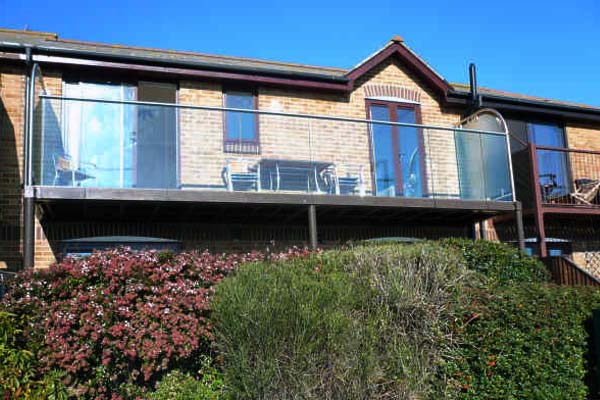
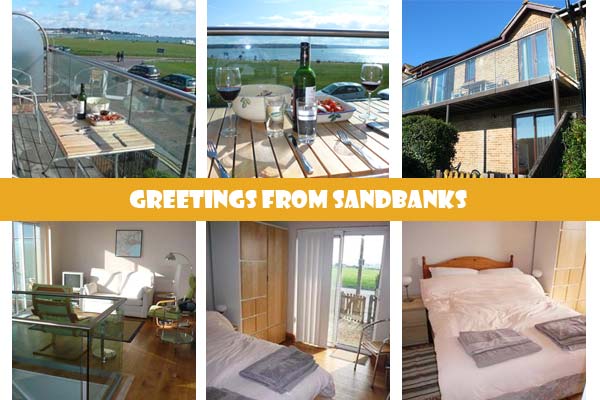
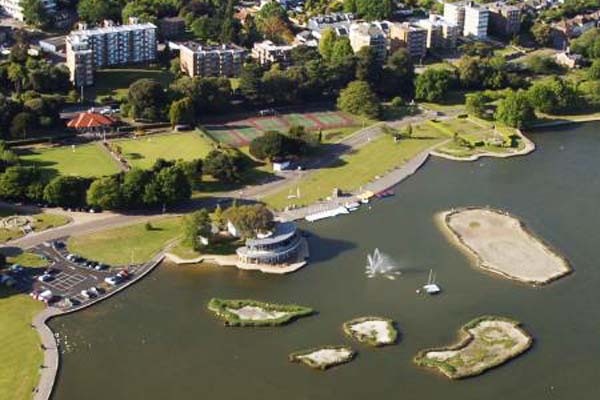
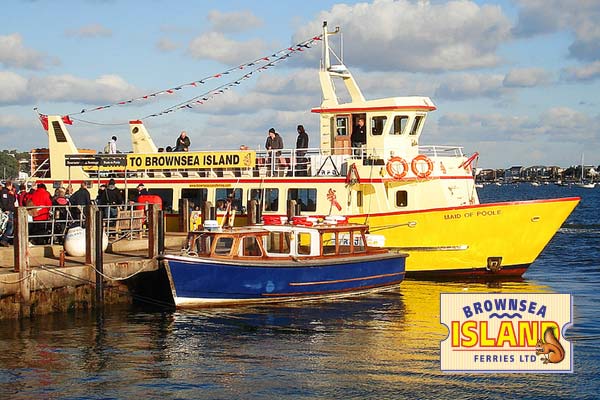

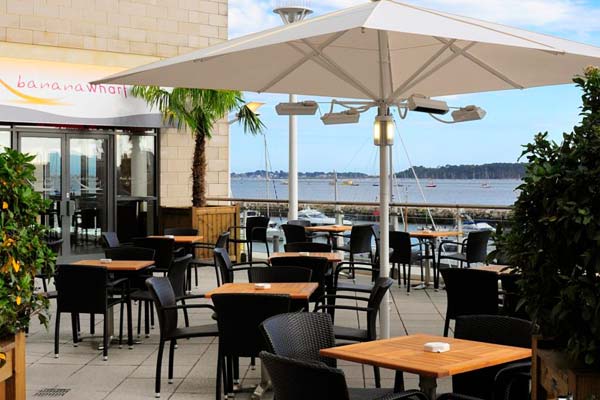
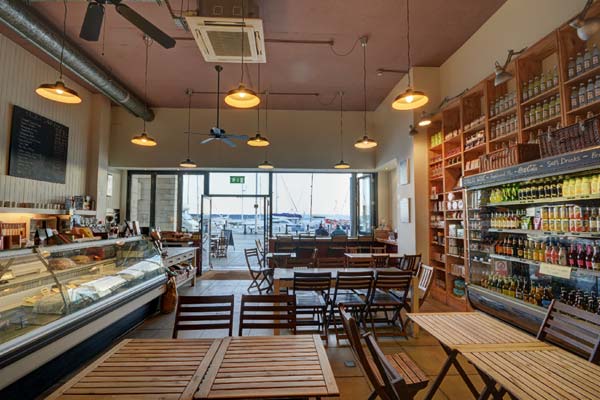
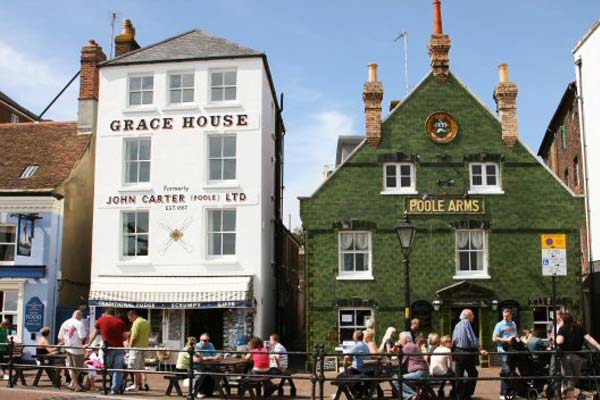
 Experience Poole in our well appointed 2 Bedroom Self Catering Cottage with excellent sea views, close to the 5 Star Beaches and Poole Town Centre.
Experience Poole in our well appointed 2 Bedroom Self Catering Cottage with excellent sea views, close to the 5 Star Beaches and Poole Town Centre.
@CORFEVIEW